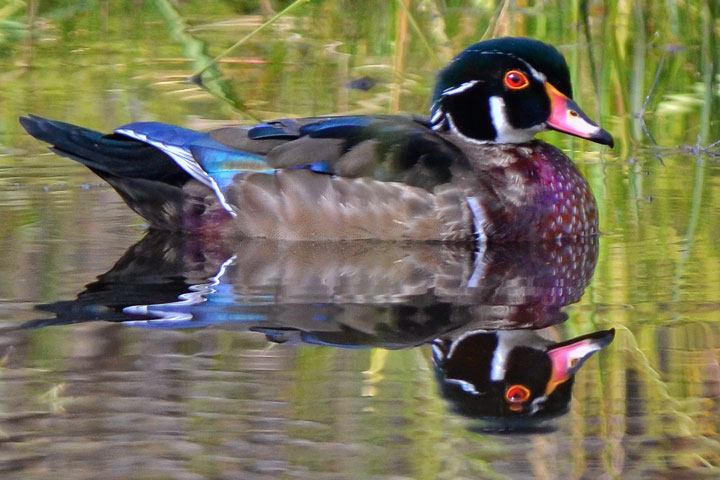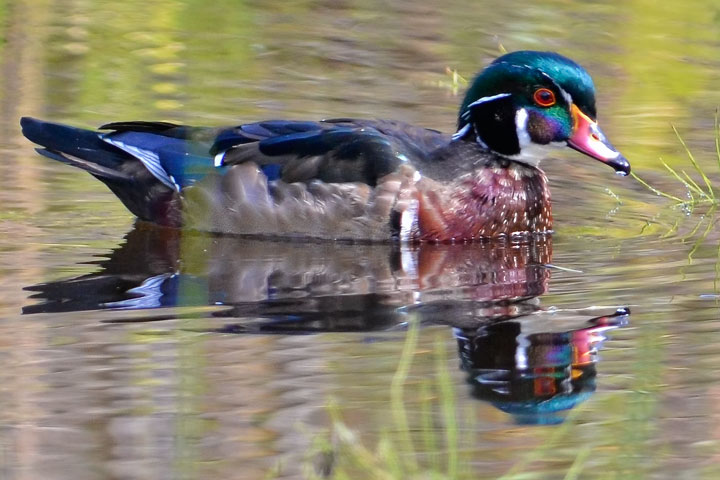A Wood Duck has iridescent feathers on its head.
Most colours in nature result from selective absorption: a pigment absorbs a range of wavelengths and leaves others to be reflected. The green of leaves and the red of someone’s sweater come about from absorption. The colours produced by iridescence result from a very different process: wave interference.
Or, at least, that is what the guide books and the many websites tell me. Yet, these sources then proceed to show a picture of a wood duck such as that in the first picture below: a black and white feathered head without any apparent colours.
Huh? They tell me, but they don’t show me.
Today, I visited the Wood Duck seen at Kokanee Creek Park a week ago. It was quickly apparent that the beautiful facial colours seen at that time depended critically upon the lighting—a distinctive characteristic of iridescence. Usually the feathers appeared black, but sometimes—well, look for yourself.
A Wood Duck as it might appear in most publications—black feathers on the head.
The iridescent feathers on the head as seen when the light is right.

